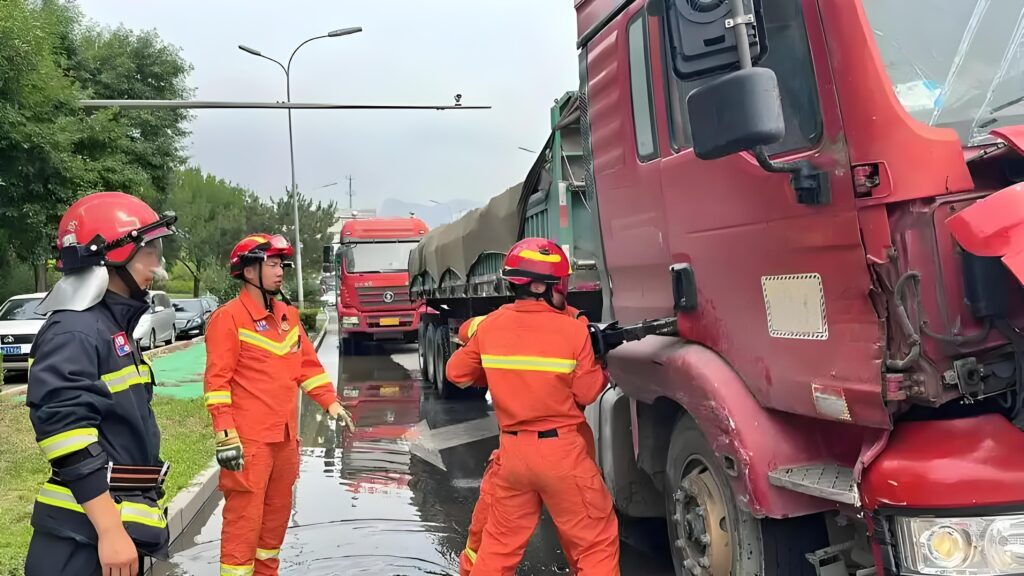In emergency response scenarios, reliable communication can mean the difference between life and death. Firefighters, paramedics, and police depend on seamless connectivity to act swiftly and coordinate in real time. Yet current public safety networks, such as LTE and traditional radios, often fail under pressure—especially during large-scale disasters or in remote areas. 5G in public safety introduces transformative capabilities like ultra-low latency, higher data throughput, and robust device connectivity. These features empower emergency services with faster, smarter, and more resilient communications than ever before.
Table of contents
5G Capabilities That Transform Emergency Response
- Ultra-Low Latency
5G networks can reduce latency to under 10 milliseconds, enabling near-instantaneous communication. This allows command centers to coordinate responses in real time, while field personnel receive updated information with virtually no delay.
- Enhanced Bandwidth
The ability to transmit high-resolution images, live video feeds, and detailed sensor data supports richer situational awareness. First responders can stream patient vitals, monitor fire conditions, or share surveillance footage—all without network congestion.
- Network Slicing
5G enables network slicing, which dedicates a separate, virtualized portion of the network to public safety services. This ensures uninterrupted access to communications, even when civilian networks are overloaded, such as during natural disasters or mass events.
- Massive Device Connectivity
From drones and body cameras to smart helmets and environmental sensors, emergency responders increasingly rely on connected devices. 5G supports the simultaneous connection of thousands of these endpoints, enabling comprehensive field intelligence.
- Edge Computing
By processing data closer to its source, edge computing reduces response times and bandwidth demands. Emergency applications can analyze video, audio, or sensor input locally—speeding up decisions and improving outcomes on the ground.
Real-World Use Cases for Emergency Response
Smart Ambulances
5G allows EMS teams to transmit live patient data—such as ECG, blood pressure, or oxygen levels—to hospitals during transit. This enables doctors to prepare treatment in advance and guide paramedics remotely.
Connected Firefighters
Equipped with thermal imaging cameras, helmet-mounted video, and augmented reality navigation, firefighters can better assess building layouts, locate victims, and avoid hazards—all thanks to seamless 5G communication.
Remote Rescue with Drones
Drones equipped with high-definition video and AI-powered analytics can quickly locate missing persons, assess structural damage, or monitor wildfires in real time, often reaching areas too dangerous for humans.
Disaster Response Coordination
Multi-agency collaboration is crucial during earthquakes, floods, or terrorist attacks. 5G supports real-time data sharing between fire, police, medical, and military units via mobile command centers and pop-up 5G hubs.
Police Operations
Law enforcement can use 5G-enabled video surveillance, facial recognition, and real-time GPS tracking to monitor crowds, identify suspects, and respond to incidents swiftly and precisely.

Market Landscape and Government Support
Governments and industry leaders are already investing in 5G for public safety. In the U.S., FirstNet provides a nationwide LTE and future 5G network dedicated to first responders. Globally, Safe City initiatives are being rolled out, integrating AI, IoT, and 5G to create more secure urban environments.
Several smart cities are piloting or deploying 5G infrastructure specifically for emergency response. In addition, public-private partnerships and regulatory incentives are encouraging faster rollout and testing of 5G-based safety solutions.
Challenges and Future Outlook
While 5G’s potential is significant, adoption is not without hurdles.
- Infrastructure Readiness: Many regions lack the necessary small cell networks or backhaul capacity to fully implement 5G public safety solutions.
- Interoperability: Existing legacy systems may not be compatible with new 5G platforms, requiring upgrades and integration planning.
- Data Security and Privacy: Fast data transfer introduces new risks around interception, cyberattacks, and the handling of sensitive information.
Looking ahead, the next 3–5 years will likely see increased deployment of 5G in smart cities, wider use of edge AI for public safety, and stronger cybersecurity protocols. As technology matures and costs decline, adoption across fire, EMS, and law enforcement agencies will accelerate.
Conclusion
5G is more than just faster internet—it’s a catalyst for safer, smarter emergency response. From improving ambulance connectivity to enabling drone-assisted search and rescue, the technology equips first responders with tools to save more lives.
To realize its full potential, collaboration between governments, telecom providers, and emergency service organizations is essential. By investing in secure, interoperable, and scalable 5G infrastructure, we can build more resilient public safety systems—and ultimately, safer communities.
FAQs:
5G’s low latency enables real-time communication between responders and command centers, reducing delays in decision-making and improving coordination.
Network slicing allows operators to dedicate part of a 5G network exclusively to first responders, ensuring reliable communication even during peak usage or disasters.
Yes. Initiatives like FirstNet in the U.S. and Safe City projects in Asia and Europe are already testing and deploying 5G for real-time emergency response.
Key challenges include infrastructure gaps, interoperability with legacy systems, and ensuring data security in high-speed networks.
5G is expected to complement and eventually integrate with current systems, but full replacement will require time, investment, and policy coordination.
